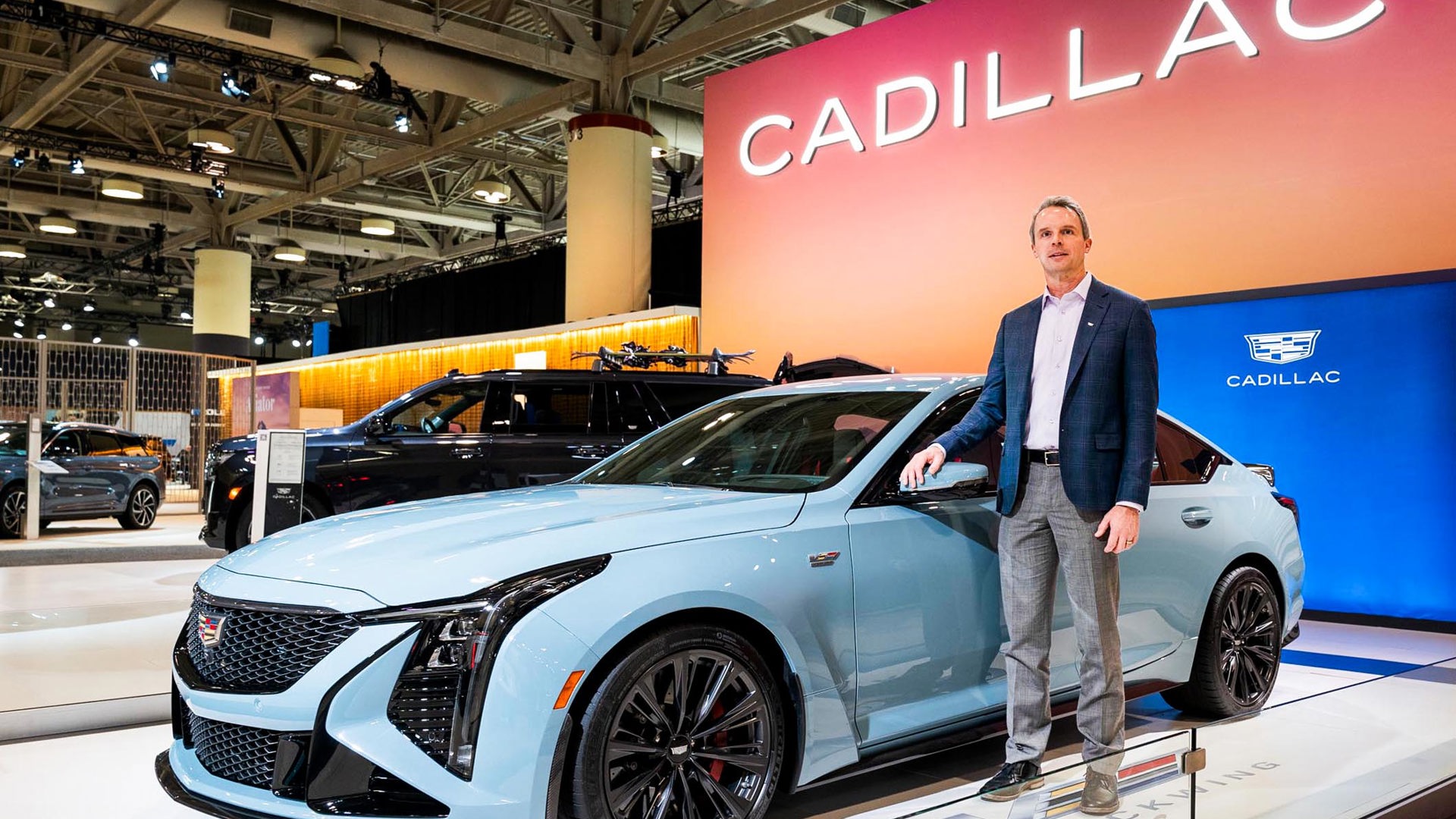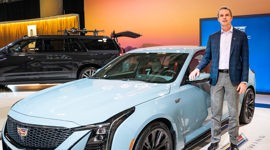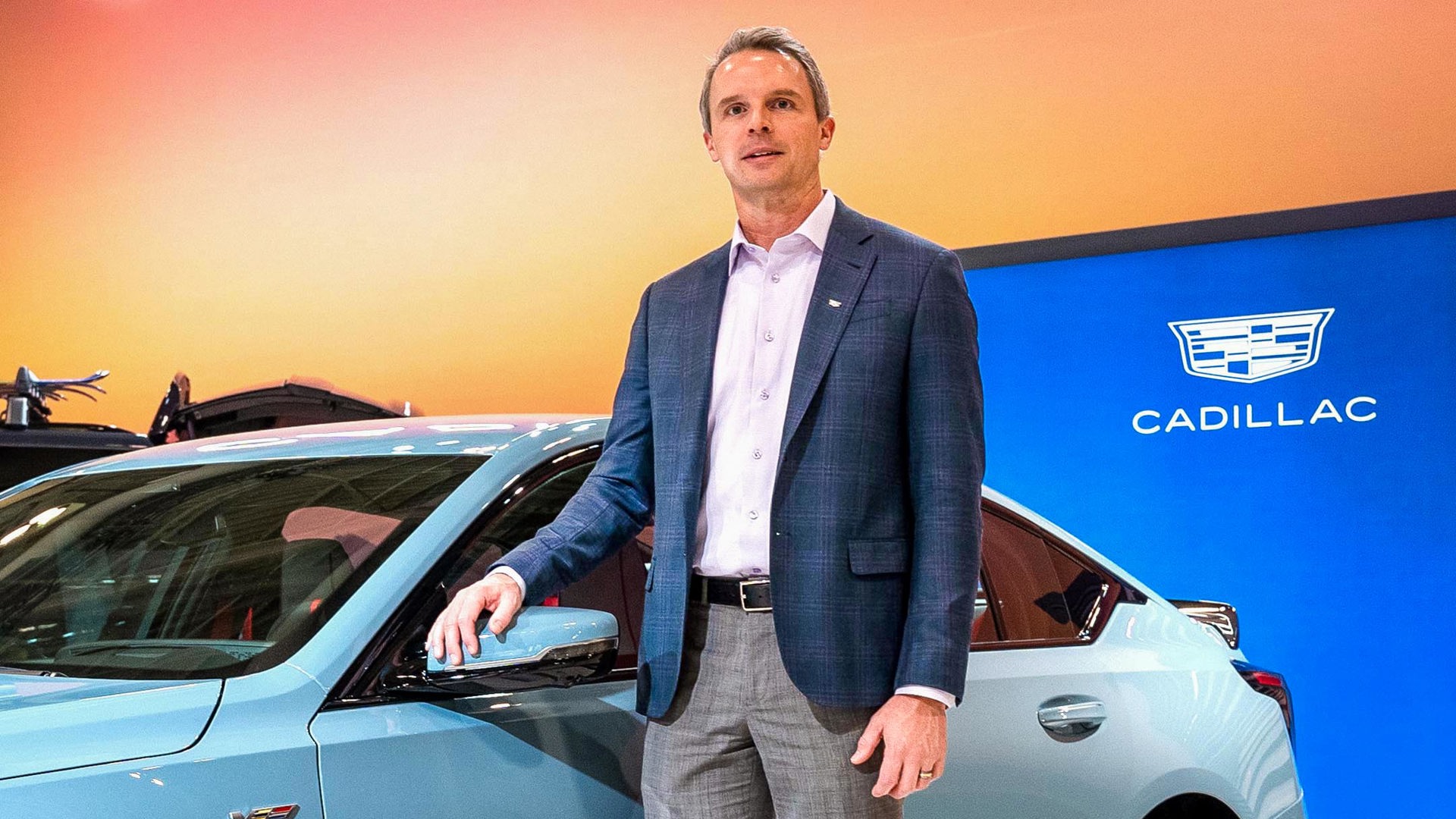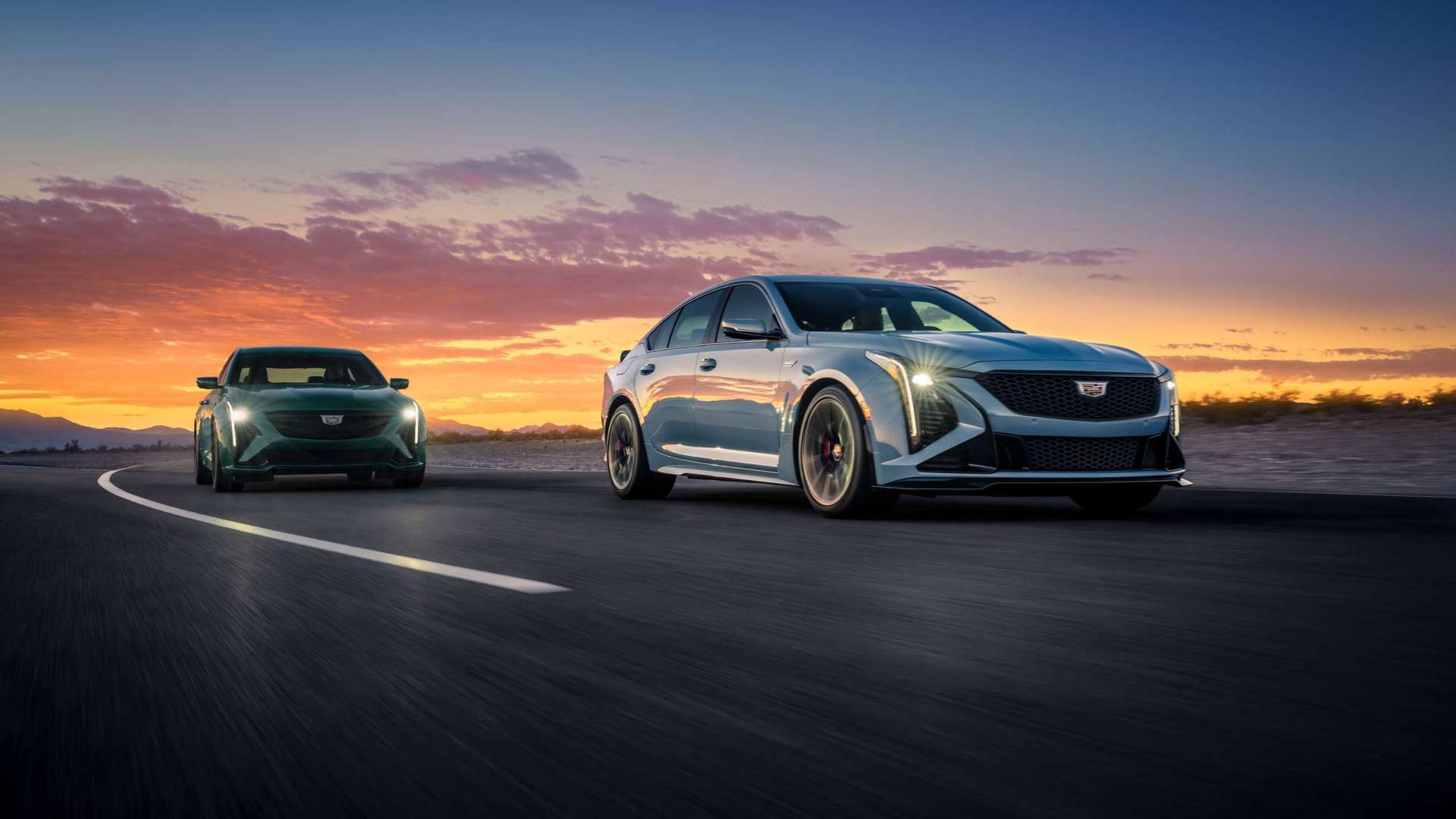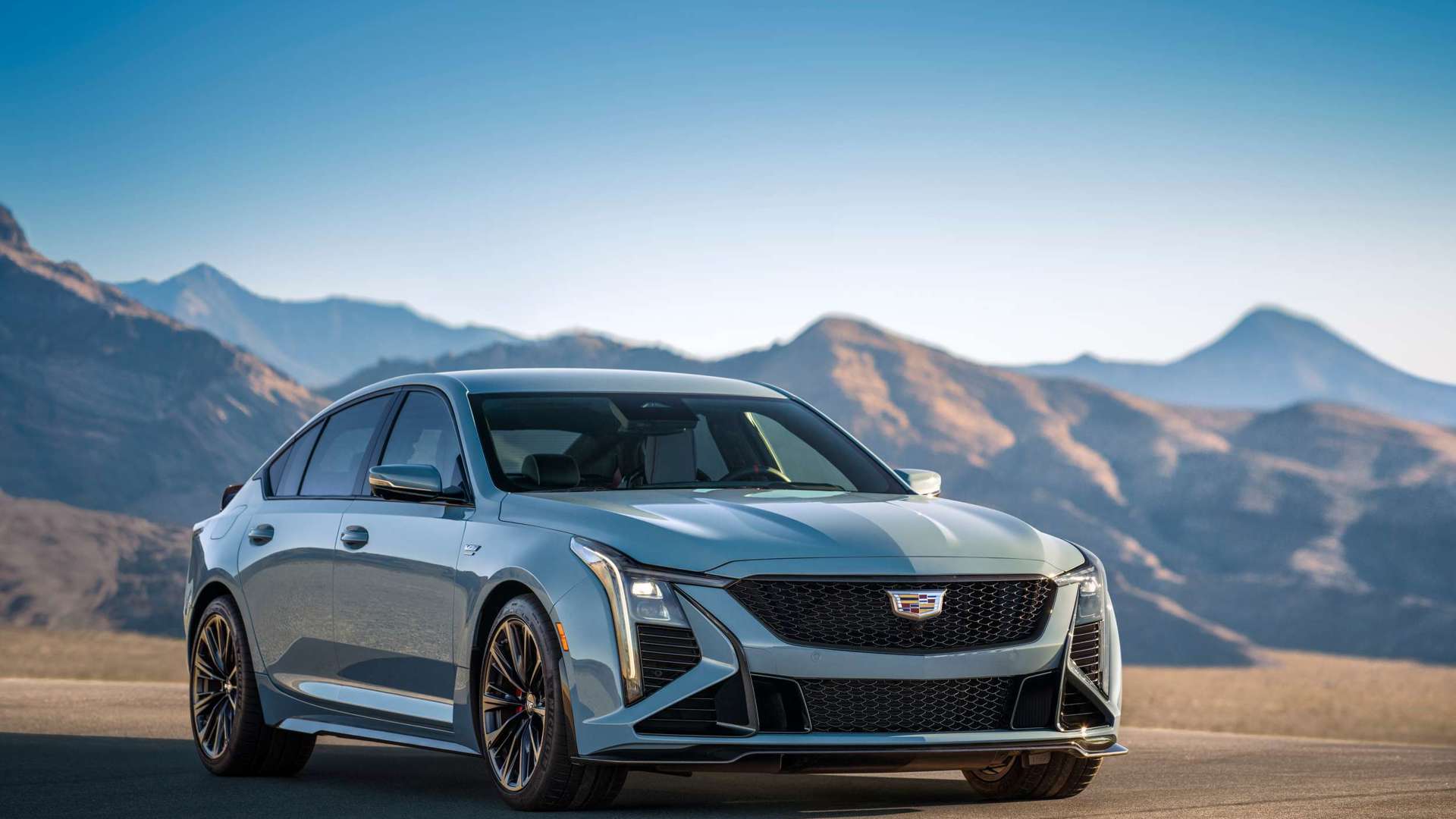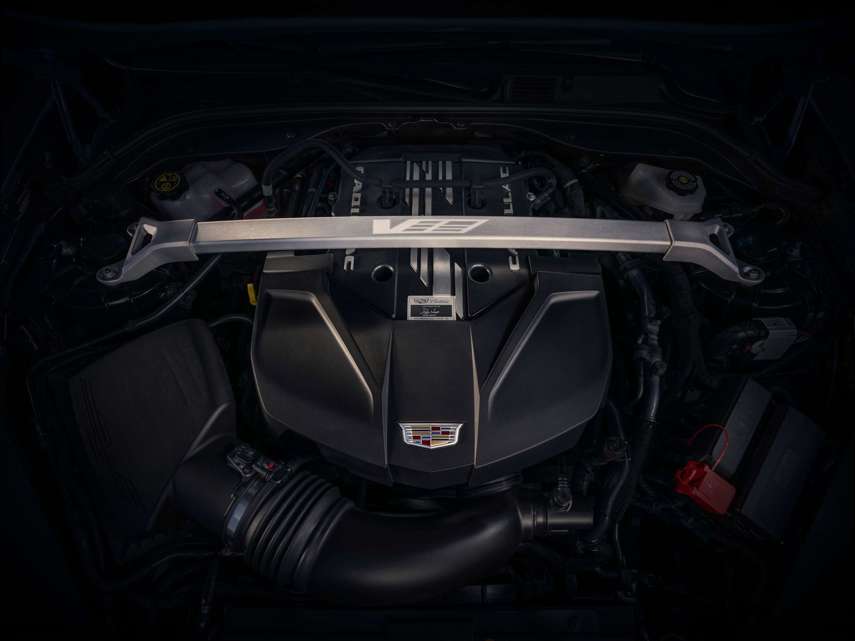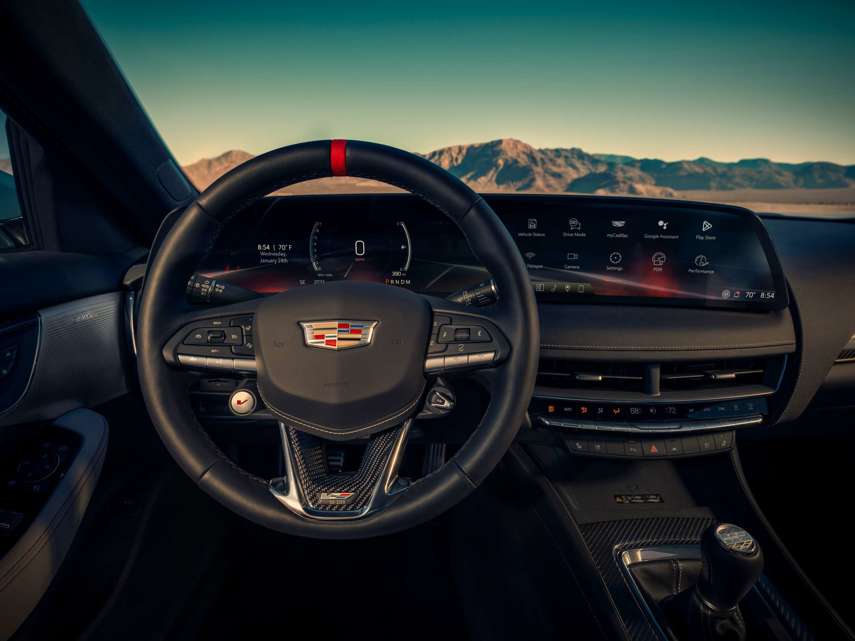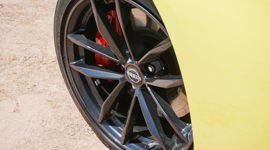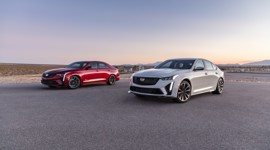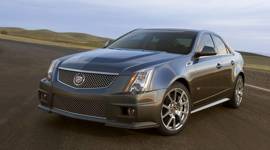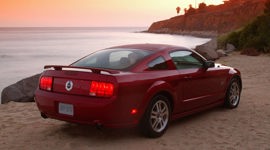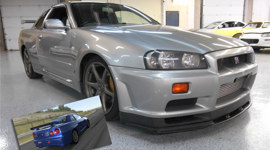AutoTrader’s Road Test Editor Dan Ilika has proclaimed the Cadillac CT5-V Blackwing “one of the most marvellous machines ever built.” It’s incredibly lofty praise, but it’s in keeping with our collective feelings here, having just bestowed the model with the AutoTrader Award for Best Premium Performance Car. This is a huge feat for the super sedan, as it was competing against such heavyweights as the BMW M5, Porsche 911, Chevrolet Corvette, Toyota Supra, and more.
When Alex MacDonald, the Global Chief Engineer for Cadillac’s CT4 and CT5 was in Toronto recently for the auto show debut of the refreshed 2025 CT5-V Blackwing, we sat down with him to try to get some more insights into why Cadillac’s Blackwing machines seem to push all the right buttons.
MacDonald brings 16 years of experience in performance vehicle development at GM, having worked on both Camaro and Corvette projects. He’s also managed the team responsible for performance testing in every condition from snow and ice to Nürburgring lapping before coming over to Cadillac.
Following are highlights from our discussion.
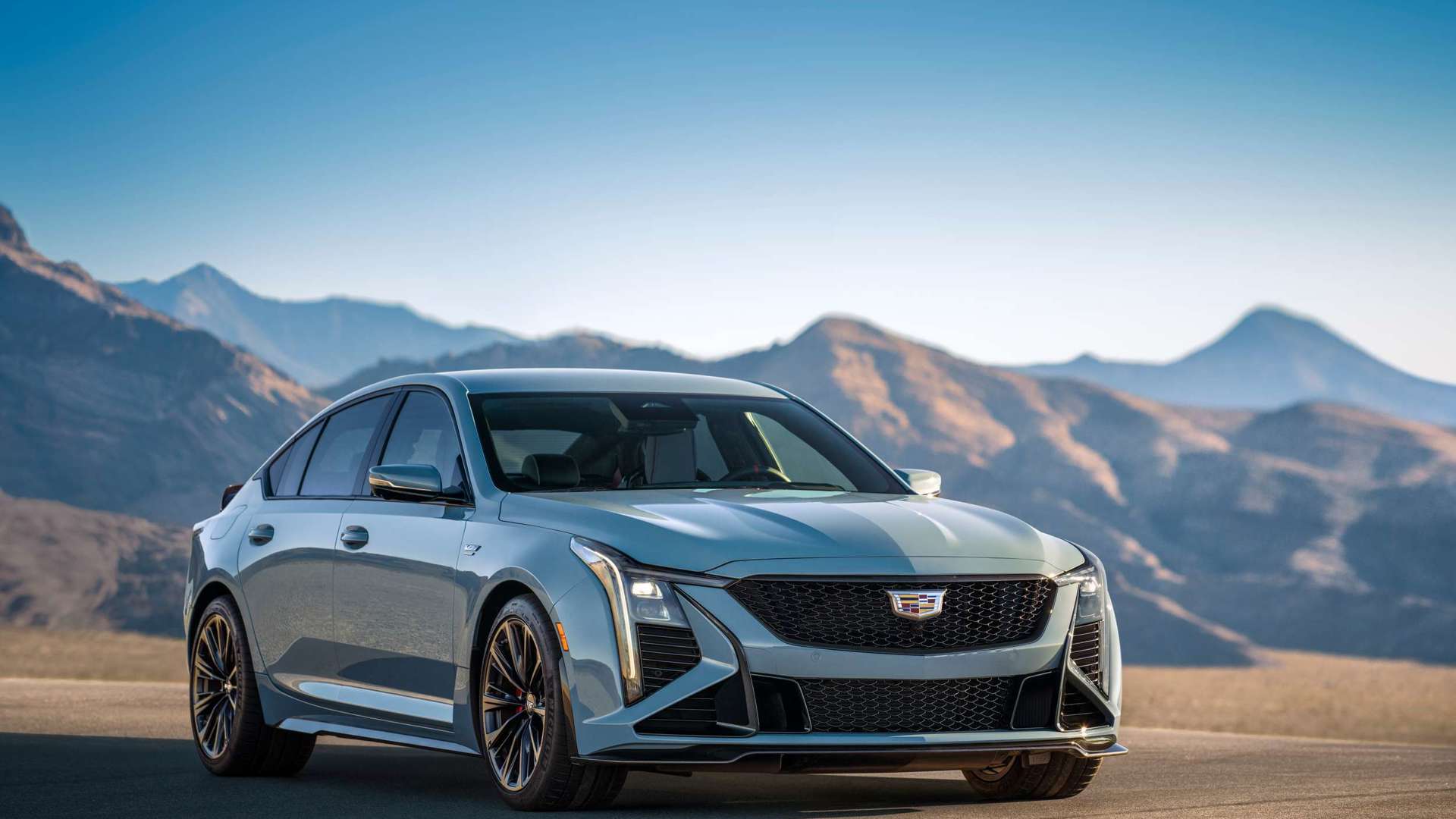
AutoTrader: First of all, congratulations! Blackwing has done extremely well. Who do you build a car like this (CT5-V Blackwing) for? What’s the buyer you’re envisioning when you develop a car like this?
Alex MacDonald: I think V and Blackwing together are a very important demographic for Cadillac. We look at the general income level, the age cohort, the conquest percentage, and V and Blackwing are just right on to the target, and they bring people into the brand. With Blackwing in particular, that’s around having really everything: a luxury vehicle, a performance, sporty vehicle, and a track-capable car all in the same. And this philosophy of “and,” you don’t compromise; you get everything. If there’s an area we have to compromise, we fix it with technology. The customer… we understand they have high expectations of what their vehicle is going to be able to do and we need to meet those in craftsmanship and in capability. In meeting the expectations of the Blackwing, we know it’s going to align with our target demographic.
AT: Is it challenging to get buyers to recognize Cadillac as a performance brand rather than one that historically has been known as a luxury brand associated with the Escalade and, further back, with large, cushy sedans?
AM: We’re seeing it succeed. I think it takes a long time. We’re now at 21 years (for V) this year, and I think that’s showing through, that we’re now seeing that recognition. We’re seeing it in our sales figures… and based on the feedback I hear from the car community and the media community, I think it’s pretty clear that folks know V, and that means they know Cadillac, so it’s working.
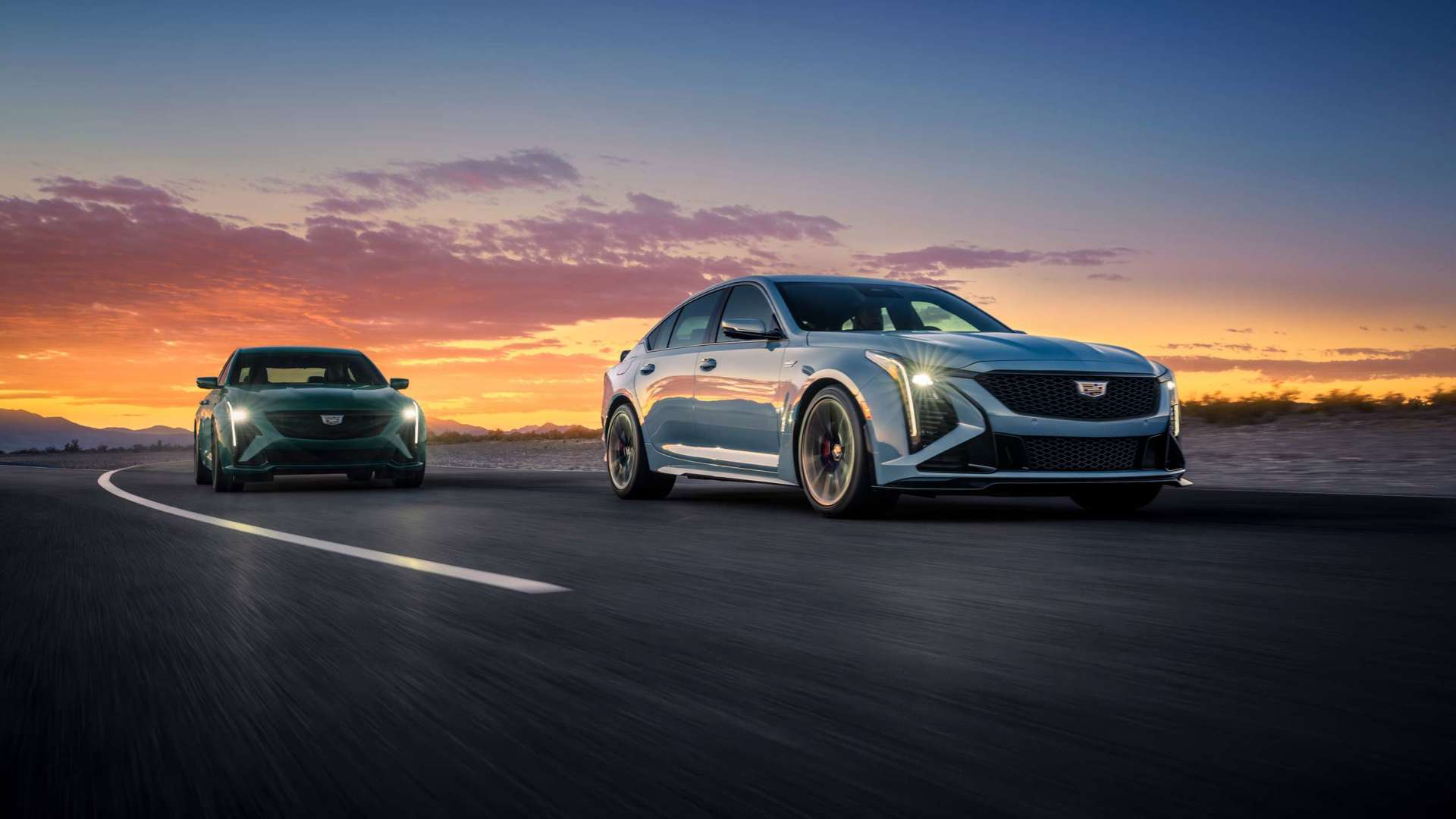
AT: From an engineering team perspective, is it more fun to work on a premium performance car than it is something like the Camaro?
AM: I’ve only been with the Cadillac team for about 18 months, I was vehicle performance manager for Corvette and Camaro, and one cube over was the Cadillac V team, so I’ve watched that parallel development path between the two and they are surprisingly different. When we look at Corvette and Camaro, those vehicles thrive and we focus on compromise. And I know it sounds odd, but a lot of those customers value the “or.”
“I want to have handling rather than ride,” and they make those choices. With Cadillac, the word is “and,” so it’s really two different philosophies and they make for very different cars. You might see powertrains that look similar across the brands, but that’s too simple. When you drive the cars, they’re very different vehicles and that’s done on purpose. The Cadillac customer needs the car to do everything and it isn’t a point where they’re trying to trade off one factor for another.
AT: Why stick with rear-wheel drive, a monstrous V8, and superchargers when all of the competitors are going to smaller engine formats, electrification, all-wheel-drive, and things like that? Why is this sort of traditional format important for Blackwing?
AM: If you look at the small-block V8 – the 6.2L that’s in here – yes, its pistons displace a large amount, but volume of the engine is super compact – probably the best in the world. I would assume that if you did the math, volume of engine per power output, it’s just unbeatable. With AFM four-cylinder mode, we do a manageable job of efficiency. It’s the right engineering solution for a car in this class. You can engineer a car so the computer will say “this is the fastest way around a race track,” or you can include the driver in that equation, and sometimes you get a different answer. I think when we look at a high-torque, responsive engine, it will often be a better experience for the driver. And then there’s certainly the nostalgia and preference of it. It’s a V8, you can’t argue with that. It’s a manual transmission. That’s an engagement you don’t get with those other solutions.
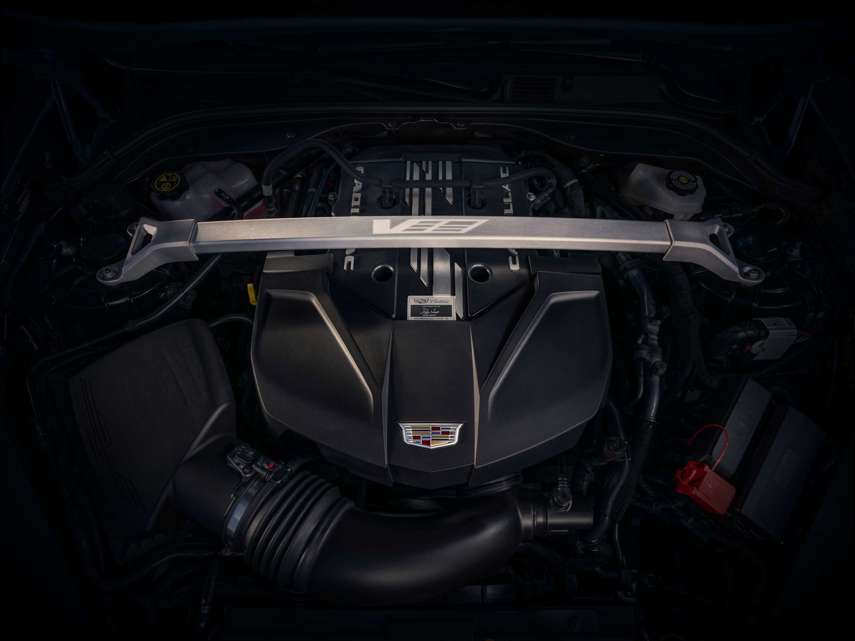
AT: Is that the diplomatic way of saying you’re trying to make a better “driver’s car” than the Germans?
AM: Yeah! You’ve got it. It really is... People discount the millisecond timescale on how people interpret their vehicles, and a lot of that has to do with the responsiveness of the powertrain and how the chassis is developed around it, so yeah, it’s kind of a timeless engine. It works really well for what we need it do. Really, although it uses technologies that were around early, they’re still, in a lot of engineering ways, the best technology for what this car needs to do.
AT: Are there cars from your own personal past that have influenced where you’ve directed past products and where you’ll continue to direct V?
AM: I kind of like weird cars. I have a hand-built, Lotus Seven-style kit car that I’ve built over the last five years with a BMW straight-six and a sequential manual transmission, so I think that says where I’m at on weight and driver engagement. It’s as engaged as you can possibly be.
Before that, I had a Volvo 240 station wagon with a Nissan SR20 turbo four-cylinder engine, so that’s sort of the utility side of it. I want that car to do it all. It’s a sports car that can go to Home Depot and haul lumber. I’m lucky enough that at GM, I get a company car that is always awesome – Corvettes and Cadillacs for 10 years at this point – it lets me do some weird stuff with my personal projects, but they all speak to lightweight, driver engagement; you know, not just getting in the car and zoning out, but getting in the car for an experience.
AT: In developing (the CT5-V Blackwing), are you aware of things or technologies that the team would’ve liked to have incorporated but were unable to do?
AM: Good question. If you could eliminate the weight and cost penalties, there is a bunch of stuff that would be fun to do. All-wheel drive would be fun to do, and we do it with the V – the V makes a great all-wheel drive sports-balanced-car – but (all-wheel drive isn’t) free and it isn’t lightweight, so probably not. When you drive these cars on the track, even with a 670-hp engine, the Michelin PS4S is just an unbelievable tire, most of the time, you can get to wide-open throttle when you expect to as a driver, so are those technologies going to earn their way on the car from a performance standpoint? Not really. Stoplight-to-stoplight on cold tires, maybe you’re going to get an advantage, but you’re going to carry all that weight… one step removed from all the nuances and steering feel that we feel are super important.
AT: It’s a no-compromise car, then?
AM: Exactly.
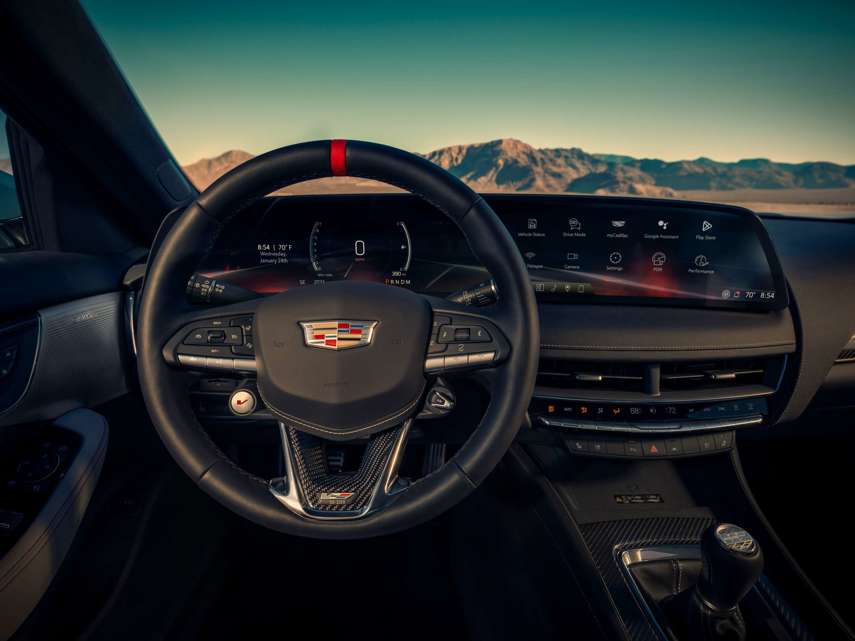
AT: The 2025 car gets predominantly visual updates, the new screen, and the performance computer. How many owners are using these as track cars and using the performance data recording system?
AM: There’s no registry that says who’s tracking their car, but we do have our driver’s school for GM – Spring Mountain – that’s open to anyone, but you get a free entry with a Blackwing and so that’s a good way for us to get feedback from customers who are interested in tracking their car. We are finding Blackwing customers are showing a clear interest in getting to the track, and that school works heavily with the PDR (Performance Data Recorder) to educate customers on what it is and what its capabilities are, and how to do lap time comparisons.
On Blackwing specifically, we are lower volume than the whole Corvette architecture, so we distill down to the customers that are expressing a strong interest. The reason you buy a Blackwing would likely be because you have interest in its track capability. What percentage? I don’t know… but it’s enough that we’ve seen it as a critical need for customers, and when we look at our driver’s school, we get that input strongly, that they’re very interested in track capability and in the PDR functionality.
AT: Recognizing the state of the world these days, is this the last V8, rear-wheel drive, performance Cadillac we’re going to see?
AM: We’re not going to talk about future stuff, but you can tell my passion for it, my boss’s passion for it, all the way through the folks that are engineering the car, we’re all doing stuff we love, so…
AT: What about the stick shift. Is that going to be around for a bit yet?
AM: We have no plans to discontinue the stick shift in any of these models. We’re over 50 per cent (take rate) for manual transmissions for these models, so customers have really expressed an interest for that transmission through their purchasing power.
With passionate automotive enthusiasts like Alex MacDonald behind the scenes, we’re hopeful future Blackwing machines will excite us as much as the current crop does.
